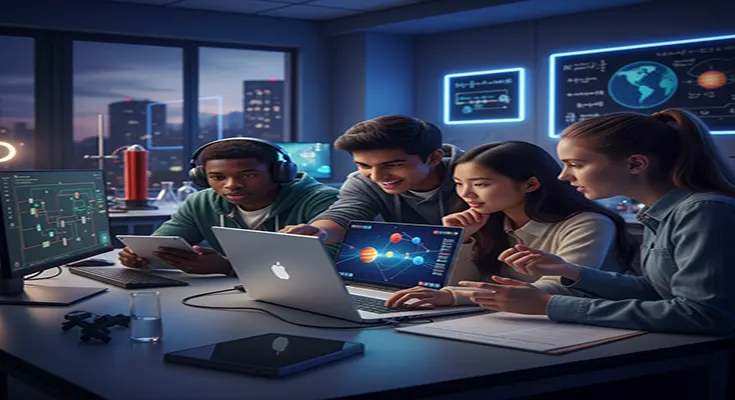High school physics is a critical subject, but its abstract nature—dealing with unseen forces, complex mathematical models, and hypothetical scenarios—can often lead to student disengagement. Traditional methods, while foundational, sometimes struggle to bridge the gap between theory and application. This is where the integration of educational video games offers a powerful, modern solution, delivering significant benefits for teaching and learning high school physics.
1. Visualization of Abstract Concepts
Physics is full of phenomena that are difficult or impossible to observe in a standard classroom setting, like orbital mechanics, quantum physics, or high-speed collisions.
- Benefit: Educational video games provide dynamic, interactive simulations that allow students to visualize these complex ideas in real-time. Students can see force vectors, observe conservation of energy in action, or manipulate gravity in a virtual environment. This visual clarity moves concepts from abstract equations to observable reality, leading to deeper conceptual understanding.
- Example: Games can model projectile motion, allowing students to change launch angle and initial velocity, instantly seeing how these variables affect the parabola and range.
2. Immediate, Low-Stakes Feedback and Iteration
Learning physics involves a continuous process of hypothesis, testing, and refinement—a process perfectly mimicked by game mechanics.
- Benefit: Unlike homework that takes a day to grade, video games provide instantaneous feedback. If a student designs a structure in a bridge-building game and it collapses, they immediately know their application of physics principles (like stress and torque) was flawed. They can immediately iterate and re-test without fear of a low grade, turning mistakes into rapid learning opportunities.
- Concept Connection: This cycle of immediate failure and correction reinforces scientific inquiry and promotes a growth mindset, essential for tackling challenging science problems.
3. Increased Student Engagement and Motivation
Modern high school students are digital natives, and using a medium they are already familiar with—gaming—dramatically increases interest and participation.
- Benefit: Educational games often incorporate gamification elements (leaderboards, achievements, rewards, storytelling) that turn tedious practice into a motivating challenge. They move away from the passive learning of lectures and textbooks to active, hands-on problem-solving. This enhanced engagement can translate into more time spent thinking about and practicing physics outside of class.
- Key Factor: By embedding physics challenges within a narrative or puzzle, games boost intrinsic motivation, making students want to solve the problem to progress in the game, not just to earn a grade.
4. Application of Mathematical Skills
Physics is inherently quantitative, requiring students to apply complex algebra and geometry to real-world problems.
- Benefit: Video games force students to use physics equations to solve tangible in-game problems, demonstrating the real-world utility of math. Whether they are calculating the needed impulse to reach a target or determining the centripetal force to keep a virtual object on track, the math is applied to achieve a functional, visual outcome.
- Real-World Context: The stakes are clear: successful application of the correct formula leads to game progression; a mistake leads to a solvable failure. This makes the math relevant and functional, not just academic.
5. Differentiation and Personalized Learning
A single classroom contains students with varied skill levels—from those who need more scaffolding to those ready for advanced challenges.
- Benefit: Many educational games are adaptive, meaning they can adjust the difficulty of physics problems based on the student’s performance. They can provide hints or simpler scenarios for struggling learners while offering complex, multi-step challenges for advanced students. This allows for personalized, self-paced review and enrichment, ensuring every student practices at their optimal learning level.
In conclusion, educational video games are much more than a novelty; they are a pedagogical tool that capitalizes on digital technology to overcome traditional barriers in physics education. By providing visualization, immediate feedback, high engagement, and personalized practice, they transform the daunting nature of high school physics into an accessible, rewarding intellectual challenge.











